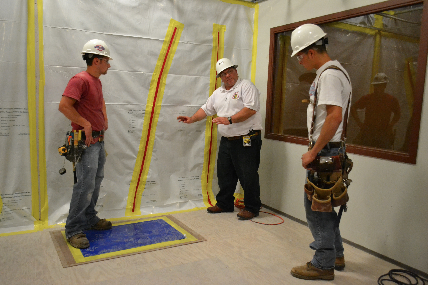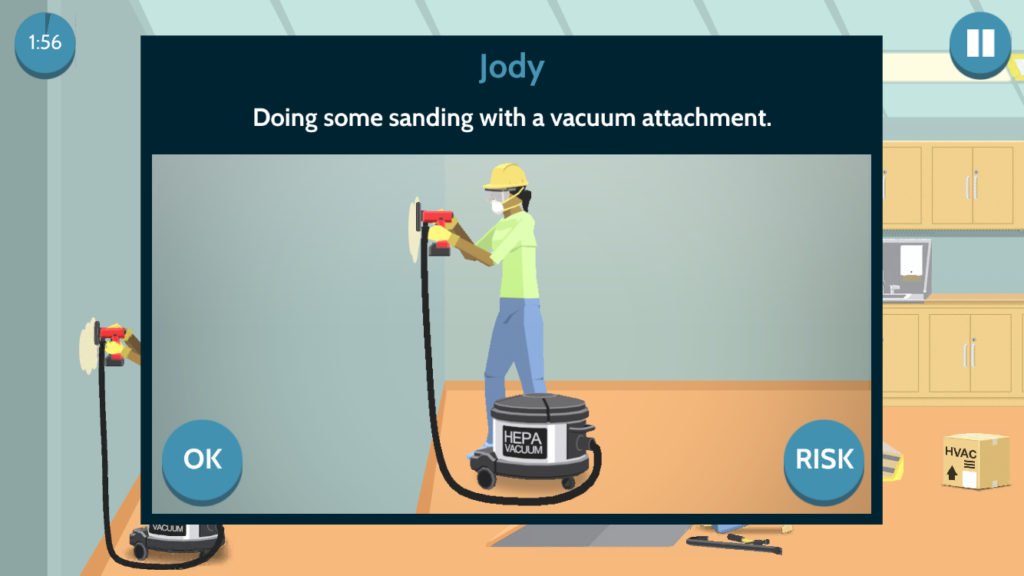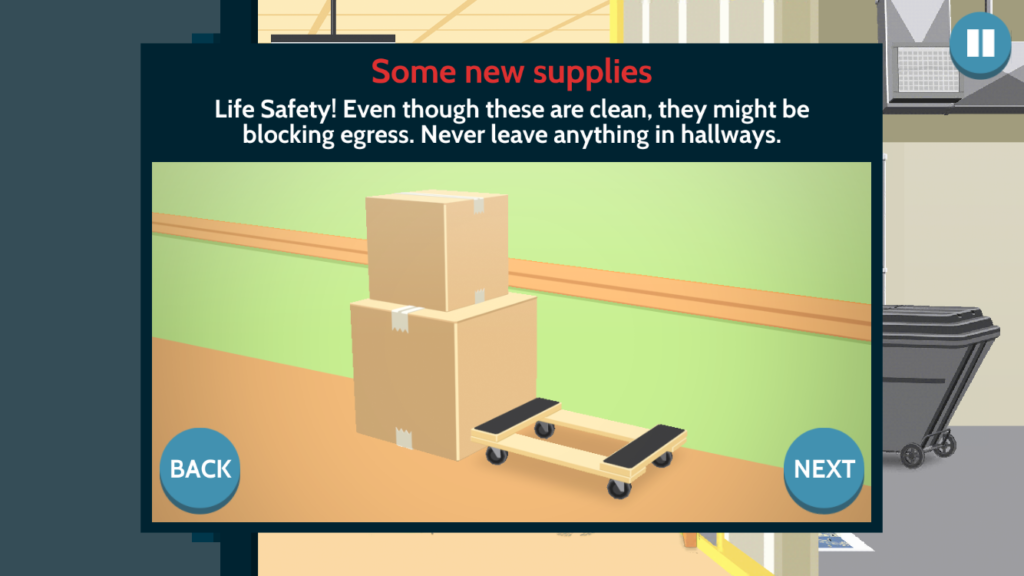 Using ICRA construction methods in Pittsburgh
Using ICRA construction methods in Pittsburgh
The CDC estimates that, every year, there are 1.7 million hospital-acquired infections (HAI), resulting in 90,000 deaths. Pennsylvania alone has over 25,000 HAI. Infection Control Risk Assessment (ICRA) construction is about preventing contamination from fungi (aspergillum, molds) and bacteria (legionella) during construction, renovation, and maintenance projects, primarily in occupied healthcare facilities. Pittsburgh is a center for excellence and a reference for the ICRA community in North America.
Following ICRA construction good practices can actually save lives. Outbreaks and infections often result in poor outcomes for compromised patients and a precise process must be followed in order to track the origin of the problem. Unfortunately, the construction site is often the source of the infection in many investigations.
Any renovation project could release dangerous pollutants for people with compromised immune systems. Potentially, any surgical patient is at risk of infection. The need for hospitals undergoing renovation to keep the facility open during construction, make this risk a real possibility.
At the Keystone + Mountains + Lakes Regional Council of Carpenters, apprentices become familiar with carpentry, and what skills a good carpenter needs. Of all the courses offered, the ICRA program is possibly the most important one, teaching both technical skills as well as responsibilities for maintaining a safe workplace during construction.
 Image from the ICRA cell phone app
Image from the ICRA cell phone app
In 2008, the St. Joseph Hospital in St. Paul, Minnesota started a complex renovation that clearly required extra care during construction since work would happen while patients were hospitalized. The Carpenters Local Union in Minnesota helped in developing guidelines for a cleaner job site. The United Brotherhood of Carpenters International – Training Fund recognized the importance of this program and expanded its scope, developing the ICRA Construction Trades Best Practices Awareness Training Program, in partnership with the University of Minnesota.
In 2011, Tom Kennedy, Director of Capital Projects at UPMC, attended an ICRA presentation organized by and the Master Builder’s Association of Western PA. Interested in the program, he approached the KML Carpenters Training Center to learn more about their ICRA 24-hour classes – focused on construction containment and based on Minnesota’s precedent – with the hope to expand the program.
With the help of Jeff D. Clair, who at the time was the Infection Control Manager at UPMC, the Carpenters developed a unique 8-hour program that is now an example for the nation. Their 8-hour course is focused on greater awareness of patients’ safety, and on why ICRA is fundamental in hospital construction. This course is great for anybody in the construction community: contractors, workers, craftsman, and project managers to name a few. The ICRA classes provide the attendees with certificates that, particularly in Pittsburgh, are very valuable. ICRA construction is now a standard for any hospital work in our region, for UPMC and Allegheny Health Network Hospitals, but also in West Virginia, at the WV University and Marshall Health, as well as in many others associate hospitals.
 Image from the ICRA cell phone app
Image from the ICRA cell phone app
A useful acronym that simplifies the ICRA good practices is RISCC: Recognizing, Identifying, Securing, Containing and Communicating any finding of infectious agents. ICRA job sites are cleaner, more efficiently run, and there are fewer problems with breaches and people not following the right protocols. In the past few years, ICRA construction protocols are now being requested in schools, government buildings, or during localized remodeling projects such as for simple offices. The increasing number of allergies and asthmatic people in our cities make ICRA construction an ideal solution to reduce personnel sick days due to poor air quality, and to SBS (sick building syndrome).
The Chain of Infection is the most important concept to grasp, clearly explained in the 8-hours ICRA class. The Infectious Agent (e.g. mold) gets into a Reservoir – like behind a wall, in the ceilings, in ductwork and plumbing, or in the floor assembly. From there, a Portal of Exit is created, when construction is started and openings are created in the Reservoir. Doors left open during construction can also release contaminants. Air currents, water supplies, construction equipment, debris and carts, and clothing of workers are the typical Mode of Transmission to the Portal of Entry (like healthcare workers, HVAC supplies, and patients). Susceptible Hosts are then easily contaminated, and the chain is restarted.
The scariest lesson from any ICRA course is that it is very easy to release infectious agents in the environment, and even easier to transport them across separate environments. The ICRA instructors put extra emphasis on the clarification that our actions and decisions (also as architects!) have an impact on patients’ health.
ICRA construction is an important responsibility and it is not for everybody: only the right people, ready to commit to absolute care and precise protocols, should do it. Usually, ICRA certified workers have experienced infections and related health complications either themselves or in their family. The workers perform construction with the same care as if a family member was on the other side of the wall.
While working in any healthcare facility, workers have a moral, legal, financial obligation to carefully follow ICRA practices, without forgetting the risk of damaging the reputation of those involved.
The creation of the 8-hour ICRA class was a collaboration of the Carpenters with David Wells, AIA, Principal at Radelet McCarthy Polletta Incorporated; Chuck Parker, Senior Associate at Burt Hill, and Tim Powers, AIA, Principal at MacLachlan, Cornelius & Filoni Architects.
When asked what architects can do to support ICRA practices, Wells stresses the importance of involving Infection Control Managers at the early stages of the design process – the sooner, the better. Infection Control Managers should be involved in the phasing of hospital renovations, and they are a precious resource to navigate the staging of every process. They should be familiar with the design strategies, in order to feel confident that the job will be done properly.
During renovations, architects typically focus on their own floor, but serious attention should be given to the impact of the work on the floors above and, in particular, those below a job site. Wells identifies the need for close collaboration with the hospital staff, to understand which patients will be affected and if it possible to work through unoccupied rooms (storage rooms) rather than patient rooms.
Engaging Mechanical Engineers in the ICRA process is also fundamental, in order to have a good airflow management. It is mandatory to find the optimal way to exhaust the air from a construction site. If the work is performed far from an exterior wall, existing exhaust ducts might be used, if properly isolated from the rest of the system. Staging and organizing HEPA filters is instrumental when working in the core of a building. Last but not least, architects have an important role in organizing the flow of materials and workers, identifying pathways that don’t interfere with the hospital activities.
As mentioned above, ICRA is perfect for every job performed around a sensitive population. If you want to learn more about ICRA construction, a first step is to download their cell phone video game (yes, you read correctly) called “ICRA for Construction”, from the Apple Store, Google Play, or Amazon. It is fun, easy to use and fairly challenging. It teaches a number of good practices in an informal way. Y
 Logo from the ICRA cell phone app
Logo from the ICRA cell phone app
Surprisingly, not every hospital in the United States follows ICRA practices, and the Carpenters Unions across the Country are constantly divulgating ICRA with the hope that it might become a standard for every hospital renovation – and beyond. The Carpenters will always be happy to help in creating a cleaner, safer, and healthier environment. Quoting Ricky O, the goal for the Carpenters is “to perform excellent construction, and do no harm.”
For more info on the KML Carpenters’ ICRA program click here. To learn more about carpentry evening classes for architects, in collaboration with the Young Architects Forum, write to yaf@aiapgh.org and subscribe to the newsletter.
An ICRA 3-hour class is typically offered during the evening hands-on programming, which typically happens every year, from January till April.
An interview with Ricky Okraszewski (“Ricky O.”), the Industry Relations/Marketing Director at the KML Regional Council of Carpenters, former Training Director, and a much-respected ICRA Trainer, dedicated to exporting the Pittsburgh example in the region, and beyond provided much of the content of this article.


